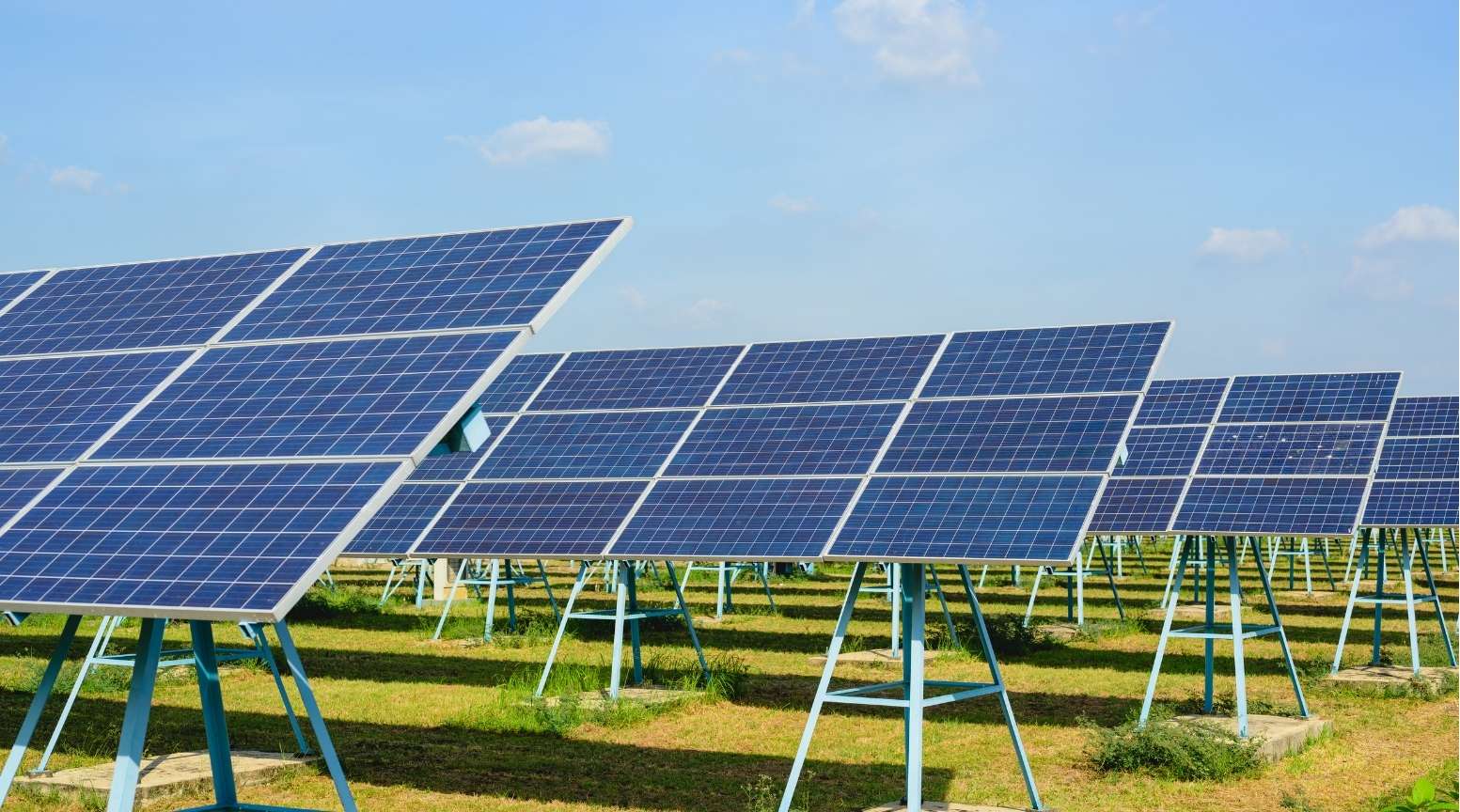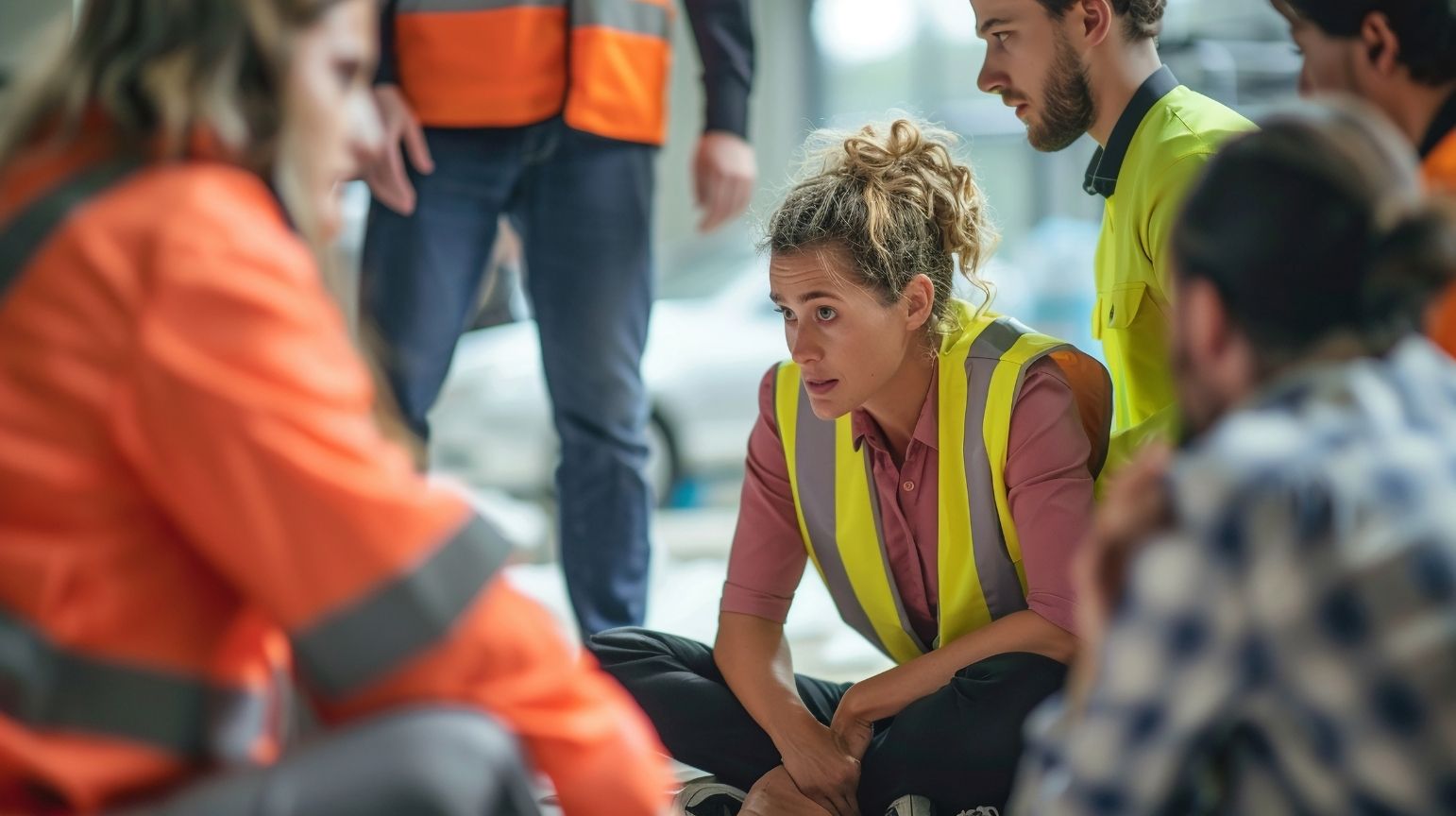The renewable energy sector is thriving. As developers seek land for solar, wind, and other projects, effective lease preparation becomes crucial. Preparing a renewable energy lease properly can save time, mitigate risks, and lay the groundwork for successful projects. Below, we’ll dive into effective strategies and practical tips for navigating the lease preparation process.
Introduction
In the rapidly growing renewable energy sector, preparing leases effectively is paramount. A well-prepared lease not only lays the foundation for a successful project but also saves developers time and reduces risks. Whether you’re involved in solar, wind, or other renewable energy projects, understanding the lease preparation process can make a significant difference.
This guide will provide streamlined tips for effective lease preparation. We’ll delve into the essentials, helping you to navigate potential pitfalls and ensure that your leases are clear and beneficial for all parties involved. From understanding various lease types to maintaining strong stakeholder relationships, each tip aims to simplify the process and enhance project outcomes. Let’s explore how to approach renewable energy lease preparation thoughtfully and efficiently.
Understanding Renewable Energy Leases
Renewable energy leases are agreements between landowners and developers. These contracts allow developers to utilize land for generating energy from renewable sources like solar and wind. Understanding the nuances of these leases is crucial for both parties to ensure a successful partnership.
Types of Renewable Energy Leases
Solar Leases
Solar leases permit developers to install solar panels on a property. Typically, the landowner receives lease payments in exchange for the use of their land. These leases often span 20 to 30 years, aligning with the lifespan of solar panels.
Wind Leases
Wind leases allow developers to install wind turbines. These contracts usually cover a significant parcel of land because turbines require space to operate effectively. Payment structures can vary; some may involve fixed payments, while others are based on energy production.
Other Renewable Energy Leases
Beyond solar and wind, other sources of renewable energy are gaining traction. These include geothermal and biomass leases. Each type has its requirements and regulations, making it essential to customize the lease to suit the energy source.
Key Considerations
When entering a renewable energy lease, several factors require attention:
- Duration: Understand the length of the lease. Most leases will cover decades, so think long-term.
- Payment Structure: Be clear whether payments are fixed or variable. Transparency helps prevent disputes.
- Land Use After Ending the Lease: Discuss conditions post-lease. Land restoration obligations may be necessary.
Grasping these elements lays the foundation for a clear and effective renewable energy lease. Both parties should openly communicate their expectations, enhancing the potential for a productive relationship.
Key Components of a Renewable Energy Lease
When preparing a renewable energy lease, understanding its key components is vital. Each part plays a significant role in ensuring transparency and functionality. Here’s a deeper look into these essential elements.
1. Terms and Conditions
The terms and conditions form the backbone of any lease. Start by clearly defining the lease duration. Specify how long the agreement will last. Include renewal options if necessary.
Next, address financial aspects. Outline payment structures in simple terms. Mention base rent, royalties, and any other fees. Clarity here prevents future disputes.
Rights play a crucial role too. Specify what rights the developer has. This can include land use for installation, access for maintenance, and renewable energy generation. Ambiguity can lead to misunderstandings later.
Finally, ensure that all parties understand and agree to these terms. Simply put, clear terms protect both parties and foster a better working relationship.
2. Land Use and Development
Land use stipulations must be clear and precise. Identify any restrictions upfront. For instance, if certain activities are off-limits, mention them. This avoids conflicts over future land development.
Discuss how much land the project will utilize. Will there be areas that remain untouched? Specifying these details can prevent conflicts with landowners or community groups.
Also, consider the development timeline. Outline expected milestones and completion dates. Unexpected delays can cause friction, so having a clear timeline helps manage expectations.
3. Rights of Way and Access
Defining rights of way is crucial for any renewable energy lease. This term refers to the legal rights that allow the developer to access the land. Specify access paths for construction and ongoing maintenance.
Consider potential obstacles. Will new construction affect existing roads or paths? If so, outline how the developer will accommodate these concerns. Clear access provisions reduce the risk of disputes over access later.
Lastly, ensure that the lease specifies who maintains these access paths. This responsibility can lead to misunderstandings if not clearly defined.
Remember, a well-prepared lease lays the groundwork for a successful renewable energy project. By clearly laying out these key components, you help prevent potential disputes and foster a collaborative environment. This proactive approach will lead to smoother operations and successful development in the renewable energy sector.
Effective Renewable Energy Lease Preparation Tips
Preparing a renewable energy lease doesn’t have to be daunting. By tackling some key strategies early on, you can streamline the process and set your project up for success. Here are some effective tips to guide you through renewable energy lease preparation.
Conduct Preliminary Research
Before diving into drafting the lease, conduct thorough research. Start by assessing the land’s suitability for solar, wind, or other renewable projects. Check local zoning regulations as well. Knowing the rules of the area can save you headaches later.
Moreover, understanding existing land use helps as well. Is the land currently agricultural or residential? This knowledge affects negotiations and development plans. Engaging with local officials can also offer insight into any potential hurdles.
Engage with Stakeholders Early
Next, involve key stakeholders right from the start. This includes landowners, local communities, and relevant organizations. Open communication fosters trust and shows respect for their input.
Schedule meetings to explain your project and its benefits. Listening to concerns can lead to valuable insights that you might not have considered. When everyone feels included, it makes for a smoother process later in negotiations.
Consult Legal Experts
Don’t overlook the importance of legal expertise. A knowledgeable attorney can help you navigate the nuances of lease drafting. They’ll ensure that all provisions are clear and legally binding.
Discuss the implications of various lease terms with your attorney. This conversation can highlight potential issues before they become larger problems. Investing in legal counsel now saves time and money down the road.
Be Transparent About Financial Expectations
Being upfront about financial expectations is crucial. Start by detailing how you plan to approach financial negotiations. Outline potential payment structures clearly in the lease agreement.
This transparency reduces the risk of misunderstandings later. It also demonstrates professionalism and good faith. When both parties feel confident in the financial terms, it leads to a more effective collaboration.
Prepare for Environmental Assessments
Lastly, be prepared to conduct environmental assessments. Understanding potential environmental impacts demonstrates responsibility. It can also bring to light any issues that the project could face.
Addressing these concerns proactively can enhance your credibility. Moreover, aligning your project with sustainability goals can open up future funding opportunities.
By following these tips, you’ll set a solid foundation for your renewable energy lease. A focused approach to preparation promotes efficiency, reduces miscommunication, and helps your project shine.
Lease Quick Tips for Smooth Transactions
Navigating the renewable energy lease process can be tricky. However, with a few practical tips, you can streamline the transactions. Here’s a quick reference list to help you prepare effectively.
1. Know Your Market
Research local market conditions. Understand the demand for renewable energy in your area. This knowledge can guide your negotiations and expectations.
2. Be Clear with Terms
Draft your lease with clarity. Use straightforward language to avoid confusion. Define key terms, duration, payment schedules, and dispute resolution processes to ensure everyone is on the same page.
3. Prioritize Key Elements
Identify essential components to include in your lease. These include:
- Payment terms
- Development rights
- Liability clauses
Focusing on key elements can prevent potential disputes down the line.
4. Utilize Checklists
Create checklists for each step of the lease preparation process. This helps track progress and ensure nothing is overlooked. Include items like document submissions and stakeholder meetings.
5. Schedule Regular Updates
Set a timeline for check-ins with stakeholders. Regular communication fosters trust and addresses any concerns promptly. Keeping everyone informed can make the process smoother.
6. Prepare for Changes
Be adaptable to changes throughout the process. Regulatory adjustments or community feedback may require modifications to your lease. Stay flexible to navigate these shifts effectively.
7. Document Everything
Keep thorough records of all communications and agreements. Proper documentation helps clarify intentions and can be beneficial should disputes arise in the future.
8. Seek Expert Opinions
Consult with industry professionals during the lease drafting phase. Their insights can help improve the lease structure and address nuances you might overlook.
9. Plan for the Long Term
Think beyond the lease signing. Consider future expansions, renewals, and operational needs. A long-term perspective can promote a more resilient agreement.
10. Review Regularly
Conduct annual assessments of the lease’s terms and performance. Regular reviews can uncover new opportunities or potential issues that need addressing.
By following these tips, you can enhance your renewable energy lease preparation. This careful attention will lead to smoother transactions and successful project outcomes.
Energy Lease Advice: Common Pitfalls to Avoid
Preparing a renewable energy lease can be tricky. Understanding common pitfalls can help you navigate this process effectively. Here are several challenges and mistakes to watch out for, along with tips to avoid them.
Lack of Clarity in Terms
One of the most frequent mistakes is vague lease terms. Unclear language can lead to misunderstandings later. For instance, specific payment structures and duration need clear definitions. Always spell out every detail. This ensures both parties know their rights and responsibilities.
Neglecting Local Regulations
Many developers overlook local zoning laws and regulations. Failing to consider these can halt projects unexpectedly. Before drafting a lease, research local guidelines thoroughly. This will save time and prevent costly mistakes down the line.
Ignoring Stakeholder Input
Some developers might underestimate the importance of stakeholder engagement. Ignoring the concerns of landowners and local communities can sour relationships. Keep communication lines open. It builds trust and makes negotiations smoother. Involve stakeholders from the beginning to address any concerns early.
Overlooking Environmental Assessments
Another common pitfall is neglecting environmental impact assessments. Skipping this step can lead to unforeseen issues. Always conduct thorough assessments to identify potential environmental concerns. Proactive measures show you’re committed to sustainability and compliance with regulations.
Not Consulting Legal Experts
Working without legal guidance is a risky move. Many try to draft leases without professional help and regret it later. Legal experts can catch potential issues and ensure compliance. Always consult with a specialized attorney when drafting your renewable energy lease.
Failing to Outline Mitigation Strategies
Finally, not addressing risks and mitigation strategies can be detrimental. Every lease should outline potential risks and how to manage them. If a challenge arises, you want a plan in place. This not only protects you but also builds confidence with stakeholders.
Best Practices for Continued Lease Management
After signing a renewable energy lease, the work isn’t over. Effective lease management can make the difference between a successful project and a costly failure. Here are some best practices to ensure that your lease remains beneficial throughout its duration.
Ongoing Communication with Stakeholders
Strong relationships with landowners and local communities are crucial. Keep communication lines open. Schedule regular updates and meetings to address any concerns or changes. Transparent communication fosters trust and ensures that all parties stay informed about project developments.
In addition, actively seek feedback from stakeholders. Listen to their insights regarding the project. This approach not only strengthens relationships but also allows for proactive solutions to any emerging issues.
Monitor Compliance with Lease Terms
Regularly review the terms of the lease. This step ensures that all parties adhere to the agreed-upon conditions. Set reminders for key dates, such as payment timelines and reporting requirements. By staying vigilant, you can address potential issues before they escalate.
It’s also wise to document all interactions and decisions. Records help maintain clarity and serve as reference points if disputes arise.
Conduct Periodic Evaluations
Set up a schedule for periodic evaluations of the project’s performance. This process may include assessing the environmental impact, financial status, and community satisfaction. Use these evaluations to adjust plans and strategies as needed.
Incorporating lessons learned from past experiences can lead to improved operations. Stay adaptable and prepared to pivot when necessary.
Addressing Changes in Project Scope or Ownership
Sometimes, projects evolve. If there are significant changes in the project’s scope or ownership, promptly communicate these to all stakeholders. If new developers or teams come on board, ensure they are fully informed of the lease terms and stakeholder expectations.
In cases of project expansion or reduction, reevaluate the lease’s applicability. Adjusting parameters, when done collaboratively, can prevent conflicts down the line.
Keep Up with Regulatory Changes
The renewable energy landscape is dynamic. Regulations can shift, impacting land usage and lease agreements. Stay informed about local, state, and federal laws. Engage with industry groups or legal experts to understand how these changes could affect your lease.
Regularly review compliance requirements related to environmental assessments, land usage, and community impacts. Being proactive about these requirements can save time and resources in the long run.
Conclusion
In summary, navigating renewable energy lease preparation requires a thoughtful approach. Start by understanding the components essential for a successful lease: clear terms, land use specifics, and access rights. Addressing these elements lays the foundation for effective communication with stakeholders and legal experts. Engaging landowners early fosters trust, while transparent financial discussions prevent misunderstandings.
Remember to prioritize thorough environmental assessments and define risk mitigation measures. This proactive stance ensures compliance and preparedness for unforeseen issues. Additionally, adopting best practices for ongoing lease management can significantly enhance project outcomes.
By focusing on these effective tips, you pave the way for streamlined renewable energy development. With a well-prepared lease, you support sustainable growth while minimizing potential conflicts. As the renewable energy landscape continues to evolve, informed lease preparation becomes an invaluable asset for future projects. Keep these strategies in mind as you embark on your journey in the renewable energy sector.







